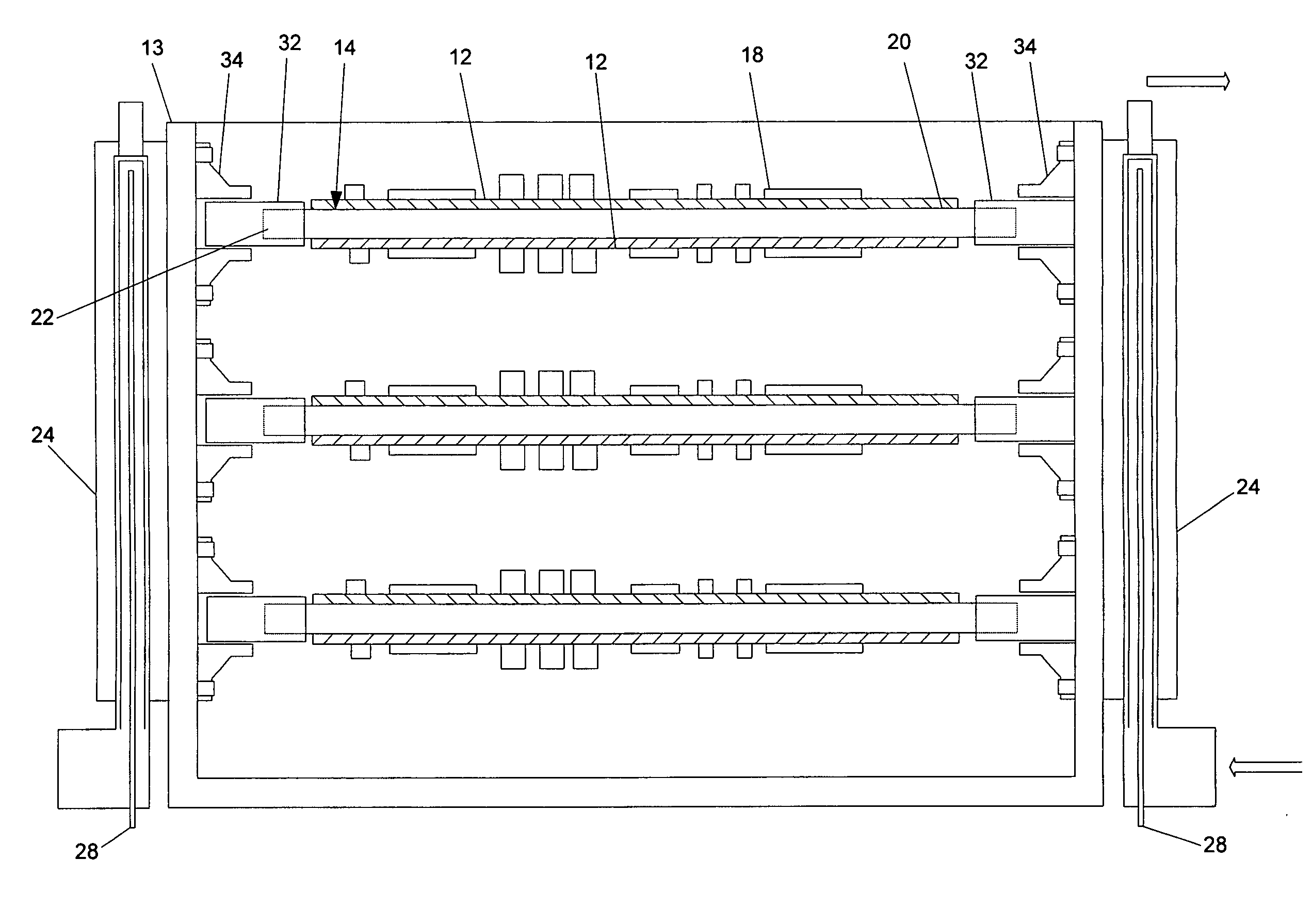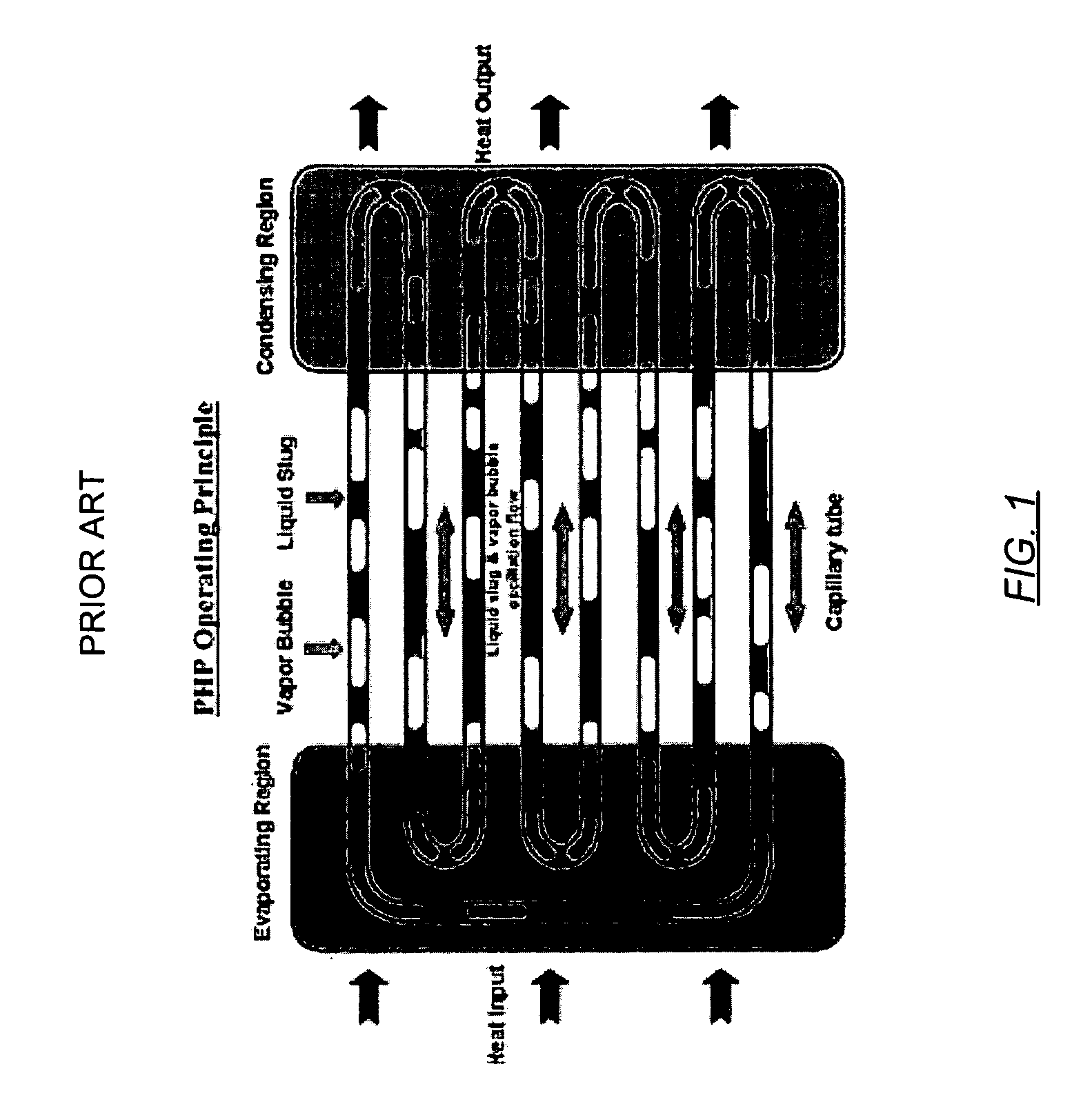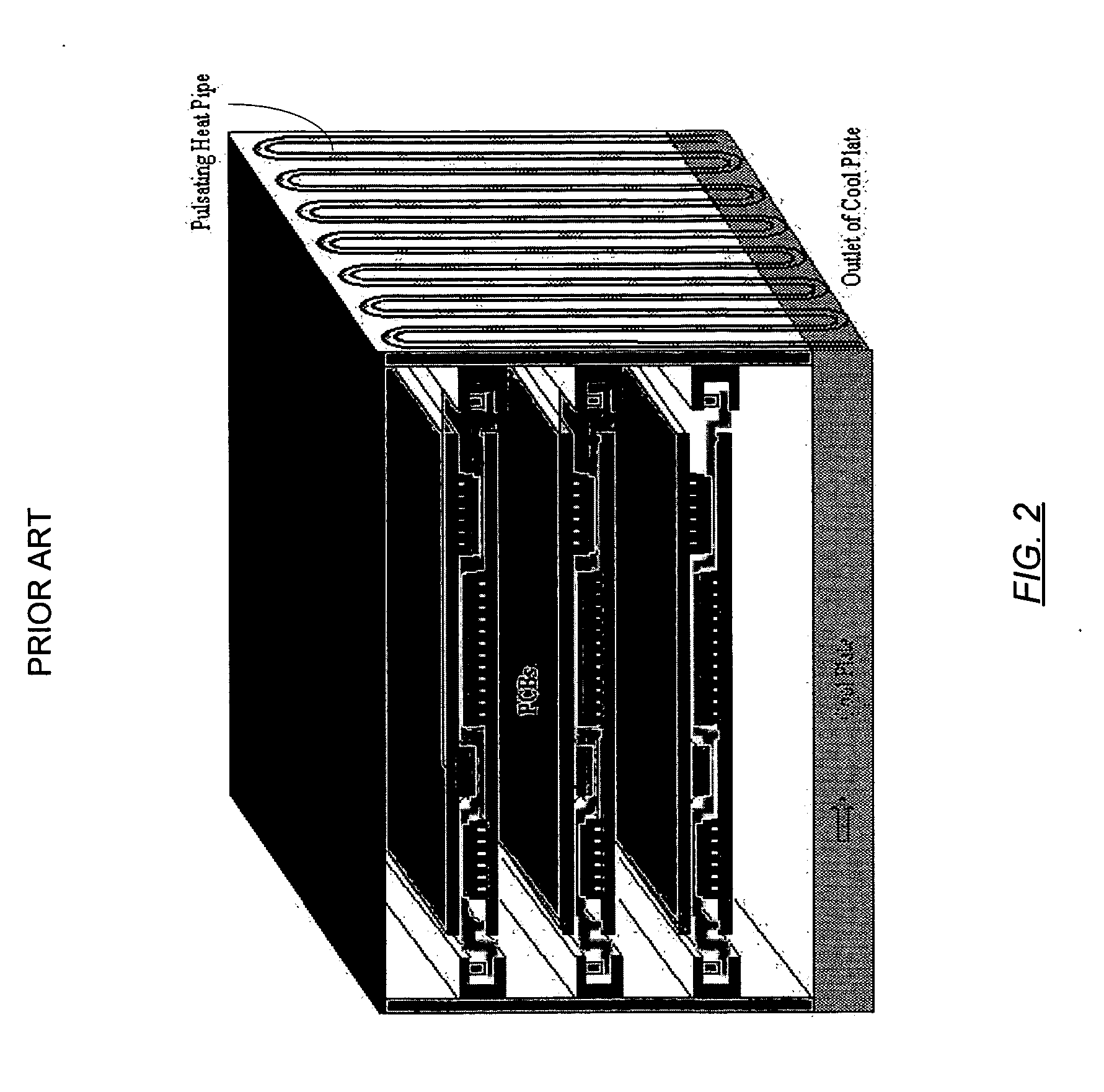Cooling apparatus, system, and associated method
a technology of cooling apparatus and cooling system, applied in the direction of cooling/ventilation/heating modification, circuit fluid transportation, circuit thermal arrangement, etc., can solve the problems of large temperature gradient, adversely affecting the performance of electronic devices, large temperature gradient, etc., and achieve the effect of transferring heat efficiently and effectively from the printed circuit board
- Summary
- Abstract
- Description
- Claims
- Application Information
AI Technical Summary
Benefits of technology
Problems solved by technology
Method used
Image
Examples
Embodiment Construction
[0031] The present invention now will be described more fully hereinafter with reference to the accompanying drawings, in which some, but not all embodiments of the invention are shown. Indeed, this invention may be embodied in many different forms and should not be construed as limited to the embodiments set forth herein; rather, these embodiments are provided so that this disclosure will satisfy applicable legal requirements. Like numbers refer to like elements throughout.
[0032] Referring now to the drawings and, in particular to FIG. 3 there is shown a cooling system 10, according to one embodiment of the present invention. The cooling system 10 generally includes a plurality of printed circuit boards 12 (“PCB's”) installed within a chassis box 13. A portion of a pulsating heat pipe 14 (“PHP”) is positioned adjacent a respective PCB and, more typically, between a pair of PCB's 12 within the chassis box 13. The remaining portion of the PHP 14 is positioned adjacent to or within a...
PUM
 Login to View More
Login to View More Abstract
Description
Claims
Application Information
 Login to View More
Login to View More - R&D
- Intellectual Property
- Life Sciences
- Materials
- Tech Scout
- Unparalleled Data Quality
- Higher Quality Content
- 60% Fewer Hallucinations
Browse by: Latest US Patents, China's latest patents, Technical Efficacy Thesaurus, Application Domain, Technology Topic, Popular Technical Reports.
© 2025 PatSnap. All rights reserved.Legal|Privacy policy|Modern Slavery Act Transparency Statement|Sitemap|About US| Contact US: help@patsnap.com



